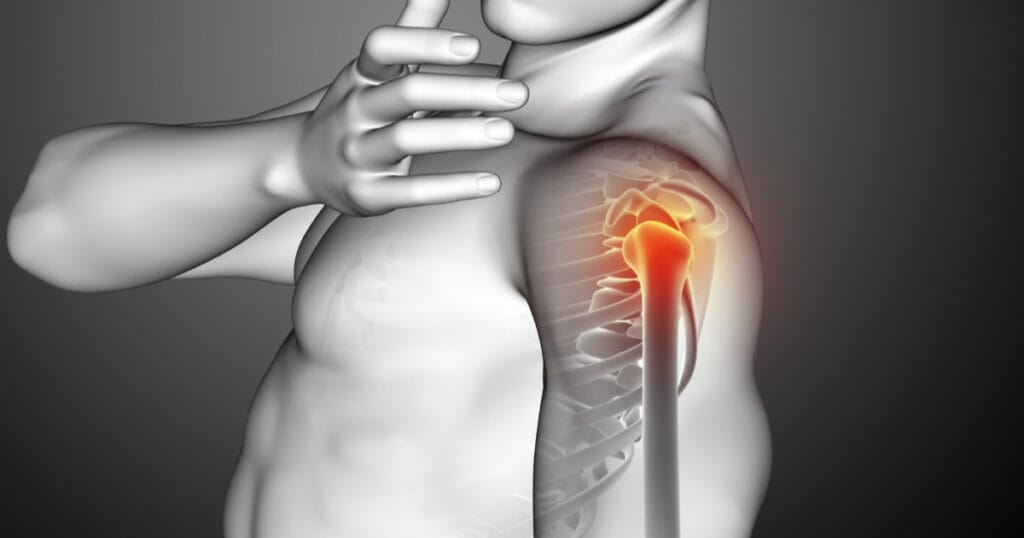Sports Injuries in the Shoulder and Treatment Options
The shoulder joint is one of the most mobile and complex joints in the body. This ability to move makes the shoulder more vulnerable to sports injuries. Sports such as tennis, swimming and basketball, where repetitive movements are common, are among the most common activities for shoulder injuries. In this article, we will examine sports injuries in the shoulder, their symptoms, treatment methods and ways to prevent them.
Structure and Importance of the Shoulder
The shoulder is formed by three main bones: the humerus (upper arm bone), the scapula (scapula), and the clavicula (collarbone). A group of muscles and tendons called the rotator cuff provides stability and mobility of the shoulder. The large movement capacity of the shoulder makes it indispensable in sports activities, while also making it vulnerable to injuries.
Common Types of Shoulder Injuries
Rotator Cuff Injuries:
- It is a rupture or inflammation of the rotator cuff muscles or tendons.
- It is common in sports that require weight lifting, swimming or throwing.
Labrum Tears:
- It is a rupture of the cartilage ring in the shoulder joint.
- It usually occurs as a result of a sudden fall or excessive strain on the shoulder.
Shoulder Dislocations:
- It is the dislocation of the shoulder joint. Recurrent dislocations can lead to chronic instability.
- It is common in contact sports such as wrestling, basketball, and volleyball.
Impingement Syndrome (Impingement Syndrome):
- It is the compression of the rotator cuff and tendons during shoulder movement.
- It is common in sports where repetitive arm movements are made, such as swimming and tennis.
Biceps Tendinitis:
- It is an inflammation of the biceps tendon around the shoulder.
- Overuse and repetitive movements can cause this condition.
Symptoms of Shoulder Sports Injuries
- Pain in the shoulder, especially increased pain during movement
- Limitation of movement and weakness
- Clicking or rubbing sensation in the shoulder
- Night pains and discomfort during sleep
- Swelling or tenderness
Treatment Options
1- Rotator Cuff Injuries
Injury Definition
The rotator cuff is a group of muscles and tendons that provide stability to the shoulder joint. Overuse or trauma can lead to inflammation, tendonitis, or tears in these tissues.
Symptoms
- Pain in the upper part of the shoulder
- Difficulty lifting or rotating an arm
- Pain at night, especially when lying on the affected shoulder
Treatment Program
Conservative Treatment:
- Resting and preventing a load on the shoulder.
- Application of ice to reduce pain and inflammation (3-4 times a day for 15-20 minutes).
- Physical therapy: Exercises that strengthen the rotator cuff muscles and increase flexibility.
- Supporting the healing process with PRP, PRGF or corticosteroid injection.
Surgical Treatment:
- Tendon repair with arthroscopic surgery in complete tears.
- Physical therapy and rehabilitation after surgery (4-6 months).
2- Labrum Tears
Injury Definition
The labrum is a cartilage ring that increases the stability of the shoulder joint. It can tear as a result of falling, sudden movements, or excessive strain during sports.
Symptoms
- Deep pain in the shoulder
- Feeling of snagging or crackling during movement
- Weakness and limitation of movement
Treatment Program
Conservative Treatment:
- Resting and restriction of movement.
- Ice application and anti-inflammatory drugs for pain control.
- Physical therapy: Strengthening exercises to improve shoulder stability.
Surgical Treatment:
- Arthroscopic labrum repair
- Rehabilitation after surgery:
- First 4-6 weeks: Arm sling protection and light movements.
- 6-12 weeks: Strength-building exercises.
- 3-6 months: Return to sports-specific movements.
3- Shoulder Dislocations
Injury Definition
Shoulder dislocation is the protrusion of the head of the humerus from the shoulder socket. Recurrent dislocations can cause chronic instability.
Symptoms
- Severe pain and deformity
- Swelling and loss of movement in the shoulder
- Feeling of instability in recurrent dislocations
Treatment Program
In the acute stage:
- Providing stability with an arm strap after the dislocation is put in place (reduction).
- Application of ice to reduce swelling.
Physical Therapy:
- First 4-6 weeks: Exercises to increase the strength of the muscles around the shoulder.
- Restoring stability through strength and balance exercises.
Surgical Treatment:
- Arthroscopic Bankart repair or Latarjet procedure (in case of recurrent dislocations).
- Rehabilitation after surgery:
- First 6 weeks: Restriction of movement and passive exercises.
- 6-12 weeks: Strengthening exercises.
- 6-9 months: Return to sports.
4- Impingement Syndrome (Impingement Syndrome)
Injury Definition
It occurs as a result of compression of the rotator cuff and tendons during shoulder movements. Overuse and repetitive movements can lead to this condition.
Symptoms
- Pain in the upper part of the shoulder
- Difficulty raising an arm or extending it backwards
- Crackling sensation during movement
Treatment Program
Conservative Treatment:
- Change of activity and rest.
- Anti-inflammatory drugs and ice application.
- Physical therapy: Exercises to strengthen the rotator cuff muscles and correct posture.
Surgical Treatment:
- Arthroscopic debridement or acromioplasty.
- Rehabilitation after surgery: 3-6 months.
5- Biceps Tendinitis
Injury Definition
It is an inflammation of the biceps tendon around the shoulder. Overload and repetitive movements can cause this condition.
Symptoms
- Pain in the front of the shoulder
- Tenderness in the biceps muscle during pain
- Difficulty lifting or rotating the arm
Treatment Program
Conservative Treatment:
- Rest and application of ice.
- Physical therapy: Exercises to strengthen the biceps muscle and surrounding muscles.
Surgical Treatment:
- Biceps tenodesis (in advanced cases).
- Physical therapy after surgery: 3-6 months.
Ways to Prevent Shoulder Injuries
- Regular Exercise: Do exercises that strengthen the shoulder muscles and increase flexibility.
- Warm Up and Cool Down: Prepare the muscles by warming up properly before and after sports activities.
- Technique Development: Learning the correct movement techniques reduces the load on the shoulder.
- Avoid Overuse: Take regular breaks during repetitive movements.
- Use of Appropriate Equipment: Prefer sports equipment that supports the protection of the shoulder.
Shoulder sports injuries can be successfully managed with proper treatment and preventive measures. Early diagnosis and the right rehabilitation program play a key role in the full recovery of shoulder functions. If you are experiencing problems such as shoulder pain, limitation of movement or weakness, you can learn the right treatment methods by consulting a specialist. We are with you for a healthy and strong shoulder!

